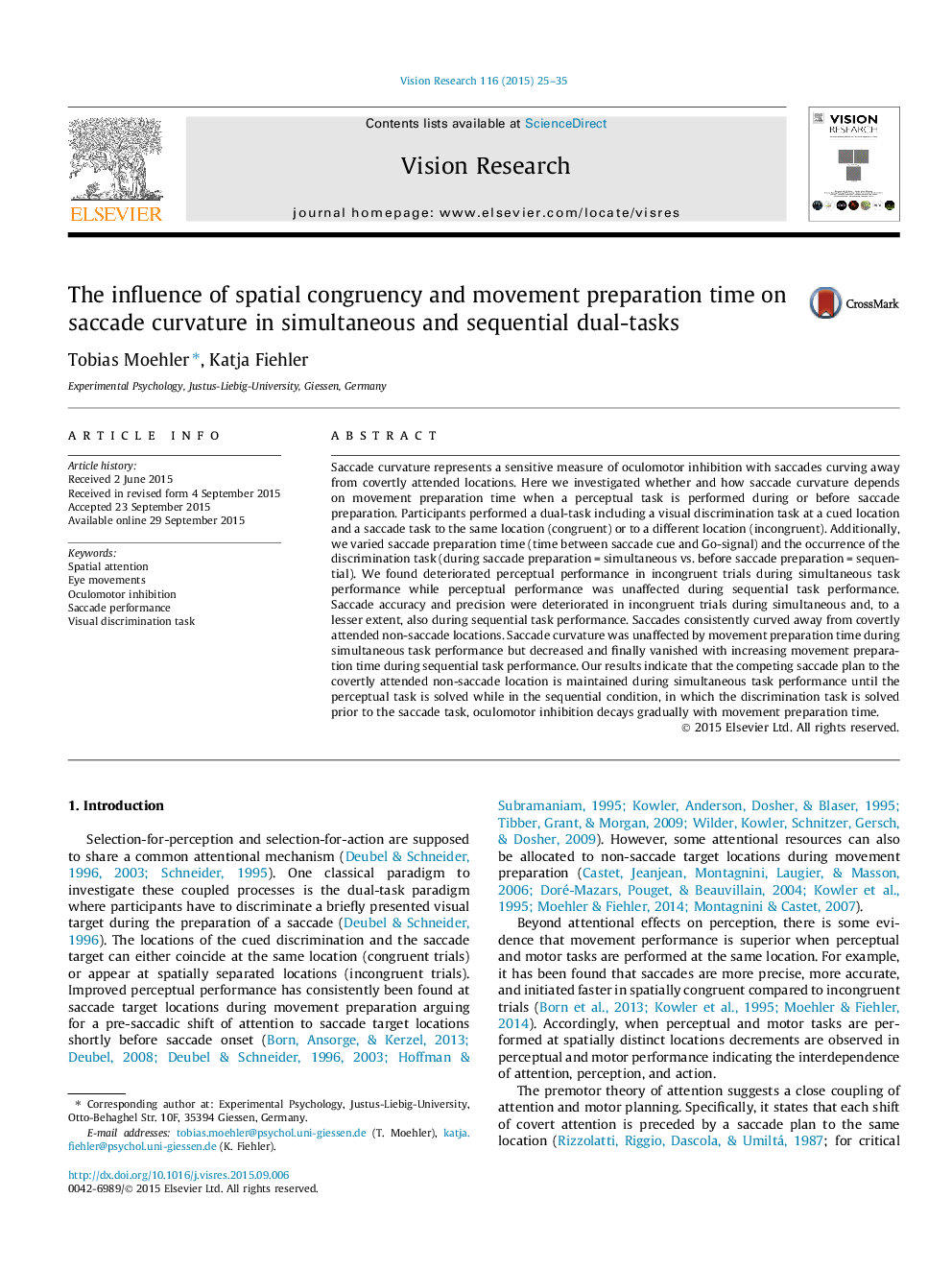| Article ID | Journal | Published Year | Pages | File Type |
|---|---|---|---|---|
| 6203172 | Vision Research | 2015 | 11 Pages |
â¢Saccades curve away from attended non-saccade target locations in dual-tasks.â¢Curvature remains stable over movement preparation time in simultaneous dual-tasks.â¢Curvature decreases with movement preparation time in sequential dual-tasks.â¢Oculomotor competition is maintained in simultaneous dual-tasks.â¢Oculomotor inhibition declines and vanishes after 1000 ms in sequential dual-tasks.
Saccade curvature represents a sensitive measure of oculomotor inhibition with saccades curving away from covertly attended locations. Here we investigated whether and how saccade curvature depends on movement preparation time when a perceptual task is performed during or before saccade preparation. Participants performed a dual-task including a visual discrimination task at a cued location and a saccade task to the same location (congruent) or to a different location (incongruent). Additionally, we varied saccade preparation time (time between saccade cue and Go-signal) and the occurrence of the discrimination task (during saccade preparation = simultaneous vs. before saccade preparation = sequential). We found deteriorated perceptual performance in incongruent trials during simultaneous task performance while perceptual performance was unaffected during sequential task performance. Saccade accuracy and precision were deteriorated in incongruent trials during simultaneous and, to a lesser extent, also during sequential task performance. Saccades consistently curved away from covertly attended non-saccade locations. Saccade curvature was unaffected by movement preparation time during simultaneous task performance but decreased and finally vanished with increasing movement preparation time during sequential task performance. Our results indicate that the competing saccade plan to the covertly attended non-saccade location is maintained during simultaneous task performance until the perceptual task is solved while in the sequential condition, in which the discrimination task is solved prior to the saccade task, oculomotor inhibition decays gradually with movement preparation time.
